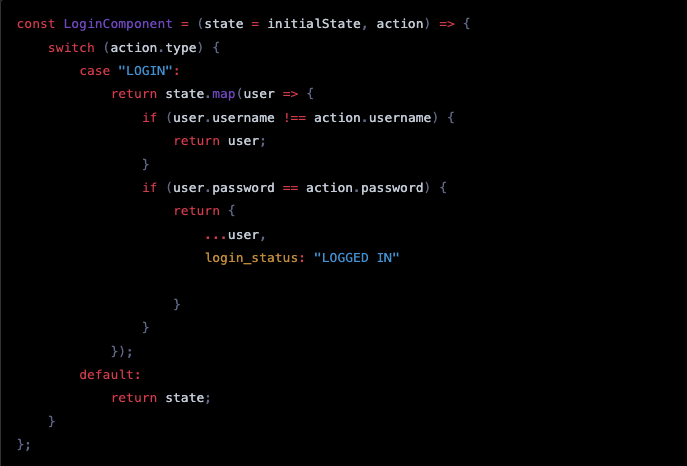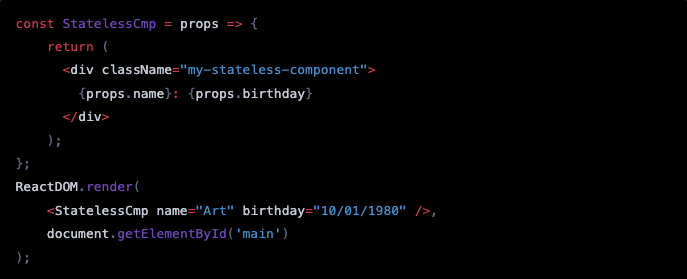Beginner's Guide: Top 7 Job Interview Questions for React Software Engineers

According to many engineering and tech-industry surveys, the React library is one of the most used and popular libraries among available JavaScript libraries. React has exploded in popularity because its declarative and straightforward API produces highly performant applications—and that momentum only continues to grow. If you’re looking to build a robust web application, chances are that React may be a good fit.
If you’re preparing for a React software engineer job interview, these are the top seven basic job interview questions you should know.
1. What is React?
It may sound like a naive question, but some hiring managers want to hear the answer from candidates. In some job interviews, this is one of the most asked questions of software engineer candidates.
Recruiters and hiring managers often expect an informed opinion about React and any competing alternatives. In simple words, this question is designed to examine a candidate’s knowledge about the JavaScript ecosystem at-large while also pressing for specifics on what makes React different from others.
Your answer should be clear and on the point:
React is an open-source JavaScript library designed by Facebook for building complex, interactive user interfaces in web and mobile applications. It was created in 2011.
2. What distinguishes React from other JavaScript frameworks?
Recruiters and hiring managers expect to hear your experiences during the job interview. A good example you might share is:
React is a small library focused on building user-interface components. For example, AngularJS proposes building an application by extending HTML markup and adding various constructs at runtime. On the other hand, React focuses on the making of components and has few evaluations about an application’s architecture.
3. What do you know about JSX?
You can answer this question quickly:
JSX is shorthand for JavaScript XML. JSX is a type of file used by React that utilizes the expressiveness of JavaScript along with HTML, like template syntax. This makes the HTML file easy to understand. The file makes applications robust and boosts performance.
Remember: JSX code can’t be by the browser on its own. It must be transpired into traditional JavaScript using tools like Babel and Webpack.
4. What is Redux? Could you give us an implementation of it?
Redux is a library compatible with React. Because it’s complementary to React, it’s crucial to have strong-enough knowledge that you feel comfortable talking about it with a recruiter or hiring manager.
You might answer:
Dan Abramov and Andrew Clark designed Redux, a lightweight state management tool used for JavaScript applications. Redux was published in 2015. For JavaScript and React applications, Redux is a standard data store. The basic concept is that data binding should move in one direction and should be saved as a single source of truth. The popularity of Redux stems from the design concept’s simplicity, and the fact that it is reasonably easy to apply.
Reducers are simple functions that take an application’s current state, execute an action and return a new state. These states are objects that specify how an application’s state changes in response to an action made to the store. It is based on the reduce function in JavaScript, which calculates a single value from many values following the execution of a callback function.
Here’s an example of how Redux reducers work:

5. What are React components?
Everything boils down to components when it comes to React. In simple terms:
Components are the construction blocks of a React application’s user interface. These components split up the entire user interface into several small, independent and reusable pieces. Then, it renders each of these compnents independent of one another without affecting the rest of the user interface.
6. What is a state in React?
If you know React components, you should also know what a state is. A good answer might be:
States are the heart of React components. States are the source of data and must be kept as simple as possible. Basically, states are the objects which determine the rendering and behavior of components. They are mutable unlike the props and create dynamic and interactive compnents. They are accessed via this.state().
7. What are stateless components?
Finally, you can explain stateless components like this:
Stateless components are nothing more than pure functions that render DOM-based solely on the properties provided. They don’t have the authority to change the state.
An example of a stateless component in React might look like this:
The bottom line
Job interview questions for React software engineer roles don’t have to be complicated. Don’t get nervous, and instead, stick to the basic fundamentals of React to avoid messing up your answers. Technical interviews might include “gotcha” topics, but the basics of React shouldn’t be one of them.
This article was written by Michael Pautov for HackerNoon and was lightly edited and republished with permission.